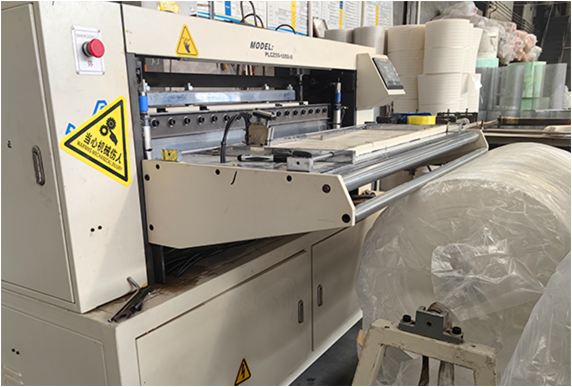 Tel:
+8615930870079
Tel:
+8615930870079
11月 . 07, 2024 08:30 Back to list
Efficient Pleated Filters for Advanced Dust Collection Systems in Industrial Applications
The Importance of Pleated Filters in Dust Collectors
In industrial environments, dust collection systems play a pivotal role in maintaining air quality and ensuring worker safety. Among the various components of a dust collection system, pleated filters, often referred to as pleated filter cartridges, stand out due to their efficiency and effectiveness in capturing airborne particles. This article delves into the significance of pleated filters in dust collectors, their advantages, and best practices for use.
What are Pleated Filters?
Pleated filters are designed to maximize surface area for filtration while minimizing the size of the filter itself. This is achieved by folding the filter medium into pleats, which increases the effective surface area available for dust and particulate collection. These filters are typically made from a variety of materials, including polyester, polypropylene, and other synthetic fibers, that provide durability and resistance to chemicals.
Advantages of Pleated Filters
1. Enhanced Surface Area The pleating design significantly increases the surface area of the filter, allowing for more dust and particulates to be captured without reducing airflow. This means that pleated filters can hold more dust before needing replacement, resulting in longer operational life.
2. Higher Filtration Efficiency Pleated filters can achieve higher filtration efficiency compared to traditional flat filters. With finer pleats and specialized media, these filters can capture smaller particles, often down to a few microns, making them ideal for industries like woodworking, metalworking, and pharmaceuticals.
3. Reduced Energy Consumption Because pleated filters allow for improved airflow while efficiently trapping dust, they can reduce the load on the dust collection system's fan. This can lead to lower energy consumption and operational costs, enhancing overall system efficiency.
4. Ease of Maintenance The long service life of pleated filters translates to reduced maintenance requirements. Users can spend less time on frequent replacements and more time focusing on their core operations.
dust collector pleated filter

Applications of Pleated Filters
Pleated filters find widespread application across various industries. In manufacturing, these filters are crucial for maintaining clean air in environments where dust and particulate matter can affect product quality and safety. In the woodworking industry, pleated filters trap wood dust, promoting a healthier workspace and compliance with safety regulations. Similarly, in the metalworking sector, these filters capture metal shavings and other harmful particles.
Best Practices for Using Pleated Filters
1. Regular Inspection To maximize their effectiveness, pleated filters should be inspected regularly. Dust collectors should be checked for excess buildup, and filters should be replaced based on the manufacturer's recommendations or when noticeable pressure drop occurs.
2. Proper Installation It is crucial to ensure that pleated filters are installed correctly to avoid air bypassing the filter. Leaks around the installation points can compromise filtration efficiency and allow dust to escape back into the environment.
3. Consider Environmental Conditions The selection of pleated filters should consider the specific environmental conditions of the application. Factors like humidity, temperature, and the type of dust can influence filter performance.
4. Training Staff Ensuring that personnel are trained on the importance of dust collection systems and the role of pleated filters can enhance compliance with maintenance schedules and improve overall safety.
Conclusion
Pleated filters are an essential component in modern dust collection systems, offering enhanced filtration efficiency, longer service life, and reduced operational costs. By effectively capturing dust and particulates, they contribute to cleaner working environments and compliance with health and safety regulations. Investing in high-quality pleated filters and adhering to best practices can yield substantial benefits in productivity and worker health, making them a vital asset in industrial operations.
-
Types and Applications of Air Filtration CartridgesNewsJul.28,2025
-
The Role of Gas Turbine FiltersNewsJul.28,2025
-
Mastering Air Filter Cartridge UseNewsJul.28,2025
-
Advanced Turbine Filters for Modern Gas TurbinesNewsJul.28,2025
-
Cellulose Air Filter Cartridge Advantages in Dust FiltrationNewsJul.28,2025
-
Cellulose Filters for Air Particle ReductionNewsJul.28,2025

 Email:
Email:





